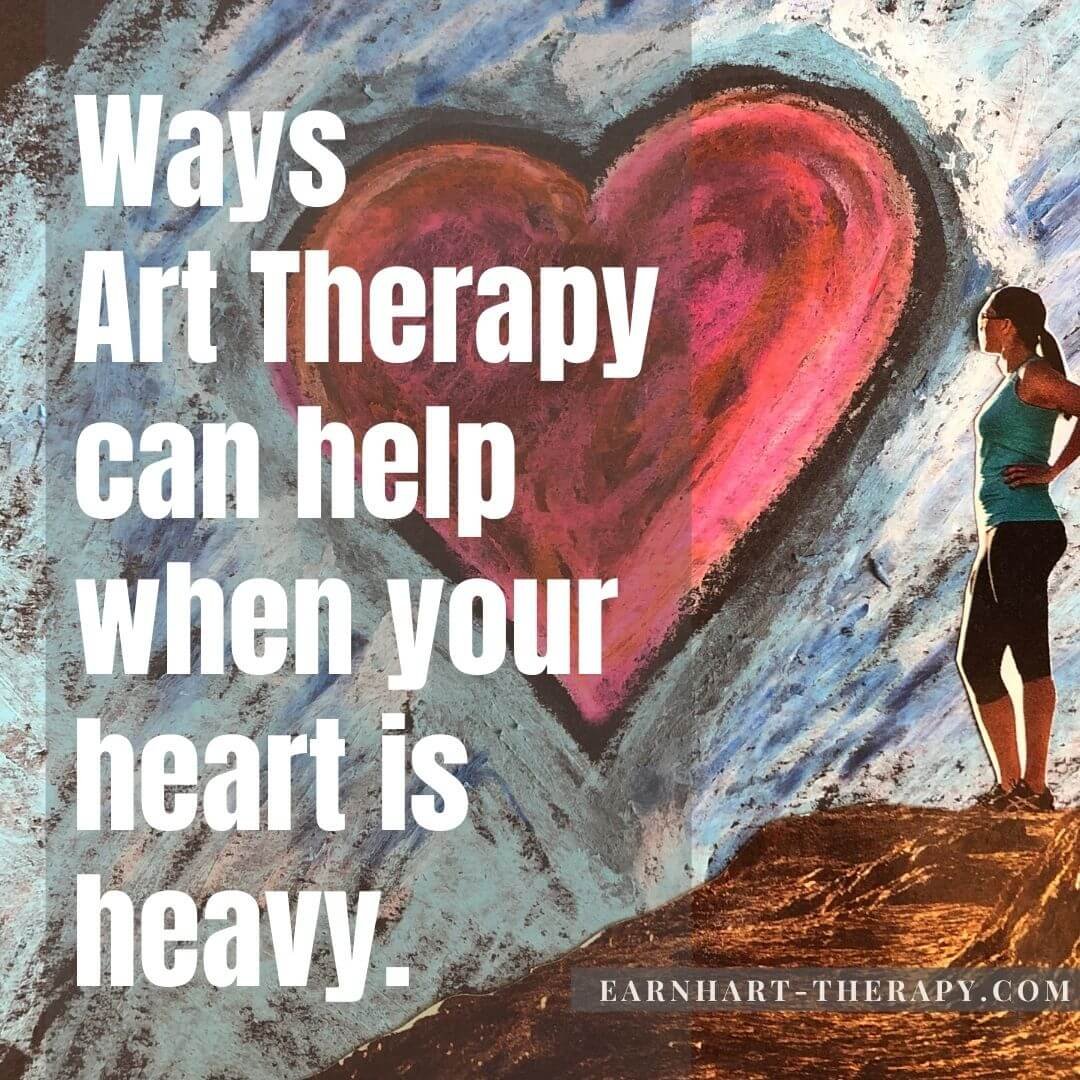Ways Art Therapy can help when your heart is heavy
It seems like many people are not doing well right now. A colleague and I recently discussed getting t-shirts that say, “No one is doing well right now. Trust me, I’m a therapist”.
Things aren’t the way they used to be. Collectively, we all have and are experiencing loss. We are grieving what was and what wasn’t. Grieving is often associated with feeling sad and crying. It can feel like a heaviness that we carry.
If you live in Encinitas, you may have noticed that the old, yellow house is gone on Leucadia Boulevard. It sat at the corner for decades, along with rows of greenhouses. How many times have I driven past that house? Decked out for the holidays with motorized decorations or blooming with flowers? Now it’s gone.
How we understand the world, and how we adjust to changes impacts how we deal with loss. The whole process can bring up lots of feelings. Not just sadness, but anxiety, and anger too. These past two years have been a marathon of changes. Sadly, many people have been on the journey of trying to adapt to the death of a loved one as well as dealing with many other losses. One key element in integrating a loss is making meaning out of our experience.
Art Therapy can help you and your children make meaning.
As an Art Therapist, I completed some training hours with hospice patients and caretakers as they dealt with anticipatory grief. I also helped families mourn deaths using Art Therapy. A big part of that was not finding the meaning, but rather making or reconstructing meaning, because death can feel meaningless. This is especially true when a death is sudden or tragic, but also when someone suffers for a very long time from a cruel disease like dementia or cancer.
While not everyone, has experienced the pandemic in the same way, we’ve all experienced unwelcome changes and some loss. In my experience, Art Therapy provides a process for people, young and old, to begin making meaning. Art Therapy involves creating, and in that creating, a restoration can happen as people reflect on their life narrative. Integrating the positives, and the negatives, the celebrations, and the losses. Sometimes there is a disconnect between our head knowledge and our “heart” knowledge. Art Therapy helps integrate the two.
Why I love Art Therapy
There are so many ways I have witnessed clients being helped by the use of art-making and the creative process in therapy. One way is the ability for images to get around words. Sometimes, our own words get in the way because we get stuck, ruminating the same story over and over.
This can be especially true about a loss or something that feels unjust. Art Therapy, because it’s an active process, involving creativity, helps people move forward and re-invest in thinking about the future. It also provides opportunities to reflect on their spiritual beliefs.
Something else I love about Art Therapy is how treatment can be individualized. People make very personal choices about what type of materials they pick, what and how many colors to use, and what size paper they prefer. Some children enjoy working on the floor, while others like standing at a table. How clients use art materials is unique to them. Much like no two people have the same fingerprints or handwriting, our art is like no other person’s. There is a freedom that amplifies the idea that a client has choices within their circumstances. This can feel empowering.
Complimentary consultation for Art Therapy in San Diego
If you are looking for an Art Therapist in San Diego North County who has experience working with grief and loss issues and uses Art Therapy, you can click here to learn more about how I can help. My office is in San Marcos, on Rancho Santa Fe Road.
If you’re interested in Art Therapy, I recommend working with an art therapist credentialed through the Art Therapy Credential Board (ATCB). The ATCB is the national credentialing board, that ensures educational and professional standards needed to be a qualified art therapist are met and maintained. This is essential, as in any mental health field, to deliver an ethical standard of care and improve your outcome in therapy.
Thank you for visiting my website. I hope you found this blog helpful. Take care and be well.
Tami
